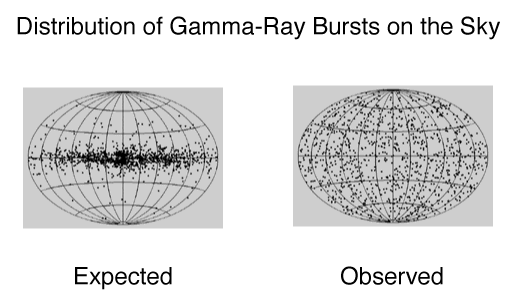Expected and Observed GRB Distributions (Credit: Unknown) If gamma-ray bursts came from objects in our Galaxy, you would expect to see more of them from the 'galactic equator', where we find most other Galactic objects. (If you go out at night under dark skies, you can see the stars in our Galaxy trace this region as the Milky Way.) However, BATSE found that equal numbers of gamma-ray bursts come from all directions.
IMAGES |
By Mission |
Stars |
HEASARC Home | Observatories | Archive | Calibration | Software | Tools | Students/Teachers/Public Last modified: Thursday, 26-Jun-2003 13:48:47 EDT |

